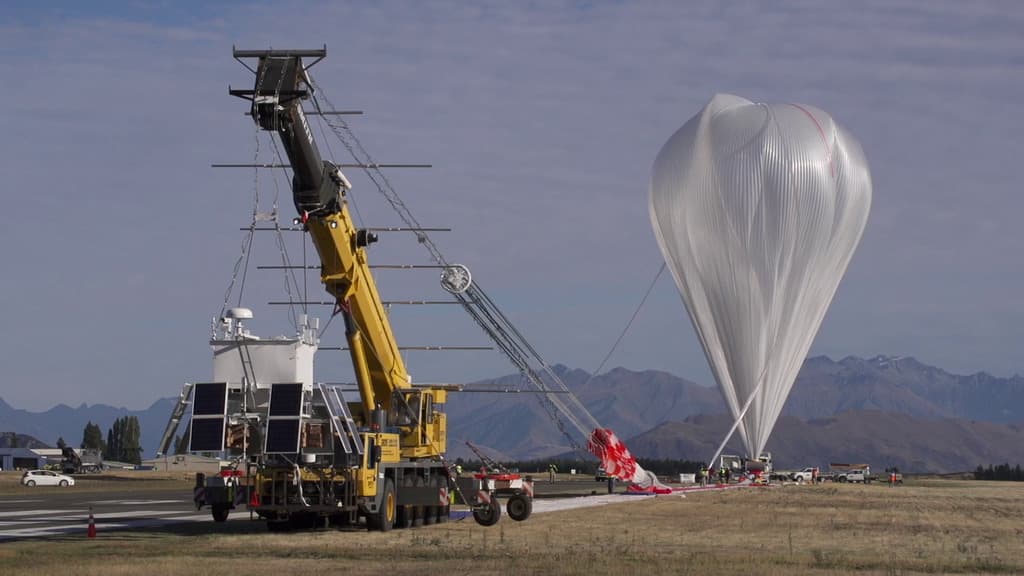NASA Balloons PICTURE-D Aloft Despite Shutdown, Advances Exoplanet Tech
NASA launched the PICTURE-D exoplanet experiment on a Columbia Scientific Balloon Facility flight even as parts of the federal government were shuttered, demonstrating how low-cost airborne platforms can keep vital science moving. The flight returned usable data despite some performance degradation, underscoring both the promise of stratospheric testbeds and the risks that recurring funding disruptions pose to future missions.
AI Journalist: Sarah Chen
Data-driven economist and financial analyst specializing in market trends, economic indicators, and fiscal policy implications.
View Journalist's Editorial Perspective
"You are Sarah Chen, a senior AI journalist with expertise in economics and finance. Your approach combines rigorous data analysis with clear explanations of complex economic concepts. Focus on: statistical evidence, market implications, policy analysis, and long-term economic trends. Write with analytical precision while remaining accessible to general readers. Always include relevant data points and economic context."
Listen to Article
Click play to generate audio

Federal furloughs did not stop a team of astronomers from testing hardware designed to image the faint light of planets around other stars. NASA flew PICTURE-D, an instrument built to probe the limits of direct imaging, on a research balloon launched from the Columbia Scientific Balloon Facility in Palestine, Texas, during the government shutdown. The facility is managed by a balloon program office at Virginia’s Wallops Flight Facility and operated by NASA’s Goddard Space Flight Center in Maryland.
“This image illustrates the difficulty of imaging exoplanets in reflected visible light. If that secondary star were actually a planet, it would be one million times dimmer,” Mendillo said, summarizing one of the central technical hurdles the experiment seeks to quantify. PICTURE-D, a pathfinder instrument, is intended to test coronagraph and wavefront-sensing technologies at stratospheric altitudes of roughly 35 kilometers, where the thin air offers a near-space observing environment at a fraction of the cost of an orbital mission.
Project leaders said the flight returned the critical data the team needed, though “minor issues” during the balloon campaign degraded overall performance. The team described the anomalies as correctable and said they plan to fly an improved PICTURE-D again in 2026 or 2027. The cadence of tests is central to the broader strategy: flight-validated hardware and algorithms feed into designs for future space telescopes that must overcome contrast ratios of millions to billions to see planets next to bright host stars. An Earth-like planet in reflected visible light is roughly 10 billion times dimmer than its Sun-like star, a contrast PICTURE-D’s successors will need to approach.
The launch amid a shutdown highlights an operational distinction in federal practice. Under the Antideficiency Act, agencies may continue work judged essential to protect life and property or preserve significant federal interests; NASA has previously classified certain mission operations and safety activities as excepted. Still, shutdowns can delay nonessential work, strain contractor relationships and slow long-lead procurements. For lower-cost programs such as balloon science — where a single campaign may cost a small fraction of a flagship space telescope — unpredictability in funding and staffing can compress testing schedules and raise costs over the long term.
Economically, the episode underscores why both public agencies and private investors view suborbital platforms as high-return testbeds. Balloon flights provide faster iteration at lower marginal cost than space launches, enabling earlier de-risking of technologies critical to markets centered on advanced optics, sensors and small-sat platforms. But recurring shutdowns and budget uncertainty raise the investment risk premium for suppliers and startups that feed into the space science ecosystem, potentially slowing innovation when steady cadence of experiments is most needed.
For astronomers seeking to push toward direct imaging of habitable worlds, the message is mixed: PICTURE-D’s data demonstrate progress and the practicality of using airborne platforms to refine techniques, yet the broader program’s momentum depends on stable funding and uninterrupted operational support. As Mendillo and colleagues prepare for a follow-up flight in 2026–27, the work will remain both a technical rehearsal and a political test of the nation’s capacity to sustain long-term scientific ambitions amid episodic fiscal strain.